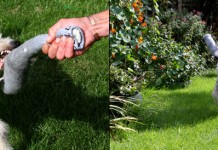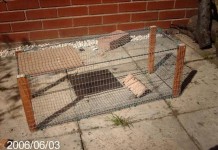MUNTJAC FROM THE BEGINING
Chinese Muntjac Deer (Muntiacus reevesi) are a non native species that through no fault of their own have become naturalised in the British Isles. Although it is not the first time these primitive little deer have graced our shores. Muntjac have walked this earth in the same form as we see them today for fifteen million years and their territory, surprisingly, stretched across what we today call Europe, Britain at this period of time was part of larger European land mass.
Although these diminutive invaders were imported from China in the age of empire, only one hundred years ago, it is believed that it made Asia its stronghold within the last two million years. Climate change may have been one possible reason for the species migration from Europe.
Most people will only ever see Muntjac as they raid the rose garden, or, as road kill in an urban area where they seem very much out of place. The idea that Muntjac would have evolved into a world of creatures such as Mastodons, Ground Sloth’s and Giant Beavers, and that they would have been preyed upon by Sabre Toothed Tigers, Bear Dogs and other very impressive but equally extinct predators, will hopefully make people more respectful of and more willingly to see Muntjac as the fascinating creatures they really are.
From the few Chinese Muntjac Deer that were introduced to Britain by the 11th Earl of Bedford, and situated in the deer park of his ancestral home of Woburn Abbey, we now have a population that covers a substantial area of England and Wales, as well as sporadic sightings in Cornwall and Lowland Scotland. The wild Muntjac population in Britain is estimated to be around one hundred thousand and increasing by 10% each year (population figures from Charles Smith-Jones’ book, ‘Muntjac Managing an Alien Species’).
How did this occur? We know that many of the Muntjac population escaped from private collections and estates during and between the two World Wars. There is also evidence that during the 1970’s and 1980’s ‘persons unknown’ transported and released Muntjac into areas that previously had no known Muntjac population. The most surprising fact about Muntjac is that they are adapting rapidly to the varied environments they encounter. Salisbury Plain Military Ranges has a large Muntjac population, as do most of the motorway and railway embankments in this country. In most midland towns and cities, it is possible to see Muntjac grazing larger town gardens and roadside verges; as well as the greener areas of many Council Estates. Muntjac are very tough and resilient creatures, unfortunately their close proximity to man will have but one fatal outcome.
MUNTJAC AND ENVIRONMENTAL DAMAGE
Nationally we now have an approximated Muntjac population of one hundred thousand. For decades it was believed that Muntjac were of no threat to crops or woodland plantations and generally this assumption was correct. But with ever increasing numbers of Muntjac Deer it has become apparent that a great deal of damage has been caused in the form of: –
Browsing: – Nibbling of buds and shoots.
Fraying: – Rubbing antlers against young trees whilst scent marking territories, or cleaning off velvet from newly grown antlers, also as an aggressive territorial display to ward off other males.
Muntjac have also become a major problem to the environmental conservationist as they impact woodland eco-systems and their biodiversity primarily by removing the shrub layer, causing a change in woodland architecture and microclimate. Muntjac are associated with reductions to rare or nationally important flowering plants such as Bluebells, Dogs’ Mercury, native species of Orchid, Cowslips, Oxlips, Devils Bit Scabious, Honeysuckle and Wood Anemone to name but a few.

Impacts at ground level in the Muntjac’s browsing of young seedlings of canopy trees also have a profound effect on woodland regeneration. Throughout Wood A and surrounding areas, it is possible to see hundreds of saplings approximately 12 to 14 inches in height that have had their tops browsed off. Each time the sapling puts out further growth, it is removed by the deer. This gives the effect of ‘broken arrows’ sticking out of the ground as far as the eye can see.
‘While woodlands are susceptible to damage from a host of mammal species (rabbits, squirrels, hares – even smaller rodents as seed predators) – of all such herbivores, deer undoubtedly have the greatest impact on both structure and dynamics. This dominating role stems in part from their larger individual size. Perhaps because of the sheer overall biomass they represent, but in addition because deer can have an impact upon woodland at all stages of growth and development’. (Dr Rory Putman, ‘The Deer Manager’s Companion).
All deer have favourite browse, for Muntjac it is hazel coppice. Reports from various Wildlife Trusts, the Woodland Trusts and English Nature suggest that regrowth of coppiced areas in conservation woodlands is commonly checked or even completely suppressed by deer browsing. In a recent survey of English National Nature Reserves (NNRs) undertaken on behalf of English Nature, damage to the coppice was identified as the single most significant problem experienced in relation to deer impact in conservation areas. If all regrowth in any cut area is continually browsed back by deer or other mammals such as rabbits and hares then that ‘coupe’ and all further areas subsequently coppiced will remain as if freshly cut. Rotation of coppice in such circumstances cannot create the rich mosaic of different woodland structures sought for diversity in other aspects of the dependent community.
Dr Rory Putman in his book ‘The Deer Manager’s Companion’ explains why Muntjac are so destructive in woodland managed for the purpose of wildlife conservation. He explains: – ‘Small species deer Roe and Muntjac have very primitive digestive systems that are not especially efficient at digesting cellulose, and cannot maintain themselves on a highly fibrous diet. Instead they rely heavily on the nutrient value of the plant cell contents. They are required by small body size and physiology to select small morsels of highly digestible materials rich in nutrients in a feeding style commonly called ‘Concentrate-selection’.
The effect on woodland with a high population of Muntjac is a complete stripping of the shrub and ground layer plants. As a plant sends out new growth, the deer will browse it. Eventually the plant will die and leave bare ground or be replaced by a plant that the deer find indigestible.
In Monks Wood NNR, a deer management plan was implemented in order to combat the suppression of coppice regrowth by Muntjac. The constant browsing of the coppiced crowns resulted in the grassing over of cut areas. In one case where all coppice regrowth has been destroyed, the failed coppice had become almost a monoculture of Carex. This increased domination by grasses in checked areas causing increased competition for other woodland plant species. Monks Wood recorded losses from coppiced areas of Wood Anemone, Bluebell and Dogs’ Mercury. These may have been further exasperated by increased competition from vigorous and aggressive monocotyledons beyond the direct effects of selected grazing of these forbs by Muntjac.
In Wood A the effects of Muntjac browsing are very much the same with the added problem of many of the wild orchid sites being heavily browsed and further suppressed by grasses.
The knock on effect is the reduction of invertebrate species such as beetles and butterflies, i.e. the Marsh Fritillary, the White Admiral, the Meadow Brown and the Ringlet which in turn affects insectivorous birds such as Tits and Woodpeckers. The damage caused by Muntjac to the shrub and base layer and coppice also leads to the decline of birds and small mammals which nest at low level such as Nightingales, Warblers, the Yellow Necked Mouse, the Dormouse and the Bank Vole which are also needed for the survival of predators such as the Tawny Owl.
Foxes, Crows and Magpies will make full use of this environmental imbalance, before also finding that there food source is all but exhausted. Unfortunately as the woodland environment is gradually eroded the Muntjac becomes the final victim of its own success and succumbs to disease and starvation.
THE NEED FOR DEER CONTROL
Man has removed the deer’s natural predators and quite accidentally provided deer with new habitat to thrive in. At the end of 1918 it is estimated only 4% of this country was designated woodland, we are now rapidly approaching 11%, but the national deer population has already exceeded the extra habitat provided. If this is allowed to go on unchecked it is believed that the deer population of Great Britain will double within the next 10 years.
Muntjac do not live in herds, they are usually found solitary or in small family groups. They share no joint purpose, as with herding varieties of deer, they are individuals and opportunists. Their primitive digestive systems require Muntjac to browse almost continually on the tastiest seasonal flora. Once an area is exhausted they move on to find new feeding grounds and territories. Regrettably in this overcrowded country the natural behaviour of the Muntjac is incompatible with the wishes of modern man.
HEALTH AND WELFARE ISSUES
Relationship of deer density to herd health
Phase I: Virtual absence of disease. When the herd is in balance with the environment, relative population density is low to moderate; reproduction (R), yearling antler development (A), body weights (W), and nutritional levels (N) are high. The abdominal parasite count (APC) is low, as are the external parasite count (EPC). Disease in the deer population is negliable (D).
Phase II: Acute overpopulation. This is over population of recent inception and short duration. Covert disease is present but usually can be demonstrated only through laboratory diagnostic procedures. After rapid herd growth, population density is relatively high and above carrying capacity; reproduction, antler development, body weights, and nutritional levels remain relatively high; APCs/EPCs are high to very high; and carrying capacity is being progressively reduced. There may be a lag period of several years (b) after the carrying capacity is exceeded before physical deterioration can be seen in the deer.
Phase III: Chronic overpopulation. Overt disease frequently is evident through gross observations of any or all of the following: – unusual losses of adults and fawns depleted fat reserves, general build up of different species of internal and external parasites, and gross lesions of internal organs due to various pathological conditions. Several years after carrying capacity are greatly reduced. Population decline basically due to nutritional deficiencies in Phase III, which may be attributed to more visible agents that merely deliver the “coup de grace” such as parasites, predators, and infectious diseases.
(The Science of Overabundance, Deer Ecology and Population Management. McShea, Underwood and Rappole).
Using this population model as a guide, it is my opinion that the Muntjac of Wood A are already strongly displaying all of the Phase II indicators and Phase III indicator ‘Unusual losses of adults and fawns depleted fat reserves’. As well as ‘General build up of different species of internal and external parasites, and gross lesions of internal organs due to various pathological conditions’.
Without a long term deer density reduction plan (deer cull) incorporated into a deer management plan, chronic overpopulation is inevitable, parasite and disease infestation will spread to other woodland mammals as well as human visitors. The ‘Castor Bean Tick’ Ixodes ricinus would be the most likely cause of human health issues as it readily feeds off any warm blooded host. Ticks can be carriers of Lymes Disease, which is a painful and debilitating condition. Lymes Disease is on the increase in this country, this is partly down to the high population of its deer hosts.
Land owners have a responsibility for the welfare of domestic animals on their land; unfortunately the law does not stretch to wild deer. Visitors to Wood A may be distressed to see malnourished and diseased deer and question why the deer’s welfare needs have not been sufficiently addressed. Presently in Wood A we have deer with wounds relating to dog attacks, road traffic accidents and wounds sustained from fighting other deer. These deer will never fully recover and are likely to die from infections, ulcerated wounds and starvation. All very much in full view of the growing numbers of visitors to the wood.
Another factor that affects the deer’s health is its reliance on finding enough food to store as body fat; which will allow it to survive our British winters. These deer are after all designed for an Asian jungle habitat. As long as Muntjac can find rich food stuffs through the summer and autumn it has a good chance of surviving on what little it can find edible in the winter months. In a highly populated environment finding the required selection of nutritious seasonal browsing is very difficult.
Overcrowding results in stressed underweight deer that cannot cope with the long wet winters.
Less enlightened conservationists may say that if Muntjac deer die as a result, then this is ‘nature’s way’. Unfortunately nature has had no hand in transporting an Asian jungle dweller over thousands of miles into to a man-made habitat that has been abandoned from its original purpose for which it was created.
Leading environmental and deer expert and former advisor to HRH Prince Charles, Ronnie Rose MBE; writes in his book entitled ‘Working with Nature’:- “Those well-meaning but misinformed people who think we should leave the countryside ‘to nature’ should have been on earth some thousands of years ago. If they had, perhaps they would have been near enough to the soil and survival to have gained a more informed point of view. Man has produced these problems and it is our moral duty however distasteful to do right by our natural environment.”
The average two year old healthy Muntjac Buck is around 14kg (31lbs) and the Doe around 12kg (27lbs). From my observations of the Wood A muntjac population and from my cull records of muntjac taken from the adjoining woodland, ‘Wood B’ I estimate that at least 45% of the Wood A deer population will go into the winter months, with as much as 15% less body mass than normal. I expect deer mortality to be in excess of 10 to 15% in any one winter. This will be partly down to aborted foetuses and poor quality does milk producing small sickly off-spring that will quickly succumb to cold and hunger. Unfortunately in this ‘unnatural predator less world’, Muntjac from the surrounding area will take advantage of the temporary population slump to move into the wood, further compounding the problem.
In researching this document I chanced upon an article in the British Deer Society’s journal ‘Deer’. The article entitled ‘Thoughts on the Ethics of Deer Management’, by Peter Green (Deer Manager of Monks Wood). This article reinforces many of my own beliefs concerning deer welfare.
‘The Five Basic Freedoms’. All wild deer (ferae naturae-res nullius) should be guaranteed:-
I. Freedom from malnutrition,
II. Freedom from discomfort and pain,
III. Freedom from injury and disease,
IV. Freedom to behave normally, (to carry out their lives as nature intended),
V. Freedom from fear.
I believe that implementing ‘The Five Basic Freedoms’, and managing of the deer of Wood A, will redress the problems of deer related damage to the environment and the excessive deer population, putting ‘The Trust’ on the moral high ground amongst its neighbouring land owners.
DEER CONTROL OPTIONS
Reintroduction of European Predators – Nationally it has been suggested that the reintroduction of natural predators such as Wolves, Bears and Lynx could manage deer numbers. Unfortunately these predatory animals would find it easier to kill domestic livestock, pets or just go through our bins, they are also very dangerous to humans who encounter them!” (Peter Carney, Wildlife writer and former British Deer Society Chairman, from his book Roe Deer Management).
Immuno-Contraception – Environmental groups that oppose deer culling have lobbied governments in both the USA and Europe to come up with a more humane manner of deer population control. Scientists have therefore experimented with a wide range of deer contraception methods. The ethical criteria for their various techniques are:-
• All methods must be reversible
• Ideally administered in a single application
• Administered remotely with minimum trauma to the animal
• Should have a controllable period of effectiveness extending up to the life expectancy of individuals of that species.
• Should either not interfere with pregnancy and lactation or be an effective pregnancy termination agent
• Should not adversely affect social behaviour
• Should have an acceptable incidence of morbidity
Unfortunately for the scientist these criteria have made their work difficult and expensive. Experiments on herds of park deer that are contained within a small range and have no contact with wild deer, are promising. However with wild deer such as Muntjac the chances of the 80% success rate that is required to achieve population control is all but impossible. The reasons for this are:-
• Male contraception has the effect that the subjects loose territory to fertile males that are actively sought out by female Muntjac and brought into their territories.
• This situation causes greater aggression from the male deer and leads to more injuries sustained in fights.
• Female deer that have to go looking for fertile males will have delayed pregnancies and are liable to miss the window of opportunity to raise healthy fawns. Delayed fawns may be born in winter and are more likely to die of cold and starvation.
• Administering the correct single dosage to the correct number of deer (male or female) without accidental double dosing or missing deer out completely would be all but impossible. This would require the rounding up and containing of wild animals that are quite able to under these stressful conditions inflict serious injuries on each other or personnel involved in the round up and contraception administration.
• The time and the amount of personnel required the price of the drugs and the general logistics required would make this a very expensive gamble that would contravene many of the ethical guidelines.
• Immuno-Contraception will not address the problems of deaths and injuries of deer victims in road traffic accidents, natural disease and birth defects, injuries from poaching i.e.-gun shot, crossbow bolt or snare wounds, dog attacks or injuries sustained by males during territorial fights.
Chemical Repellents There are two methods of applying chemical repellents in order to reduce deer damage: –
• Scent barriers The use of repellents to form a barrier that deer will not willingly cross. The repellent is sprayed around the perimeter of an area that you wish to protect, i.e. a coppice or stand of Blue Bells.
• Browsing deterrents The repellent is sprayed liberally onto a coppiced stump or around the base and branches of a sapling, to form a noxious taste in the mouth of the browsing deer.
All well and good! Unfortunately there is only one chemical repellent approved for use with the UK under the Control of Pesticides Regulations (1986). The Repellent is known as Renradine and in tests; it appeared to be ineffective against deer.
Other direct feeding repellents such as Aaprotect, Scuttle and Curb, all worked well in tests; but required regular application due to rainwater diluting or washing it off completely. The cost of these chemicals is prohibitive. For commercial forestry it was deemed cheaper to use individual tree protection.
Other methods that have been tried include: – Lion dung, human hair, commercial bird scarers, and Jeyes Fluid all to no avail.
In conclusion there are no chemical repellents licensed in the UK that will effectively reduce deer damage in agriculture, forestry or conservation. Chemical barriers, as with all the stated controls, have no effect on the excessive deer population nor address deer welfare issues.
Permanent Fencing The exclusion of deer entirely would seem a rather draconian measure, but its advantages and disadvantages should be explored:-
The Advantages
• Removing the deer population completely from the site would allow the rapid natural regeneration of coppice and plant life.
• If a sound maintenance regime for fence repairs is implemented, the normal life expectancy of the fence would be in the region of ten years.
The Disadvantages
• To effectively exclude deer from Wood A this would require the perimeter of the 210 acre site to be fenced off with a 1.8 metre high fence constructed of heavy duty wire stock fencing, doubled up to create the appropriate height. The fence would be supported with high tensile spring steel wire and linked together with spiral lashing rods. The lower fence should be of 75mm hexagonal mesh, the upper fence of 150mm mesh. Deer fencing should be able to withstand the largest deer found in the area. Fallow and Roe deer are found in and around Wood A and therefore I have specified the fence height for the exclusion of Fallow and added the 75mm lower fence for the purpose of excluding Muntjac Deer. The fence would be suspended between 2.5 metre high wooden or steel posts/poles at approximately 2 metre intervals with extra bracing posts and gates required at designated areas. (As recommended by the Forestry Commission Bulletin 102 Forest Fencing).
• The erecting of the fence is cost prohibitive and inappropriate on aesthetic grounds. (£8 to £10 per metre, deer gate £330, not including labour).
• Conservation groups have carried several surveys on the effects of deer proof fencing on woodland bird life. Thousands of birds die each year from collisions with this fencing. The species that would be most at risk in Wood A would be the Tawny, Barn and Little owls, Green Wood Pecker and the Woodcock.
• The total exclusion of deer would be detrimental to the natural balance of the woodland flora and fauna. Deer are, after all, an essential part of the make up of ancient woodland.
• Deer would be excluded from the food, shelter and the safety that the wood provides. The deer would eventually breach the fence and in doing so injure or kill themselves in the process.
• The expensive materials required to form the fence would be tempting to thieves and vandals.
• The deer population would have to be removed from the wood once the fence was erected, to be of any effect. This would require considerable manpower and raise a great number of health and safety and deer welfare issues. A cornered Muntjac Buck is a dangerous animal!
• The removal of all the resident Muntjac population would be physically impossible.
• Other large mammals i.e. Badgers and Foxes would also, to some extent, are excluded.
• Removing the deer from the wood only serves to move the problem on to the neighbouring properties and roads.
• Poachers operating outside the wood could utilise the fence to drive deer against it with dogs in order to achieve a greater number of kills.
Temporary Fencing
This is an expensive option that has only limited effectiveness. All too often fences are erected to protect sensitive areas, only for the Ranger to find that the deer has managed to clear the fence and graze quite freely. Most of the disadvantages associated with permanent fencing are true of its temporary counterpart. A bewildering array of fencing is available for this purpose, from chestnut pailing to high tensile stock fencing. For Wood A I personally feel that temporary fencing would be expensive in both financial cost and manpower to maintain.
Natural Barriers and Fencing
Brashing up and dead hedges has been used for centuries in this country and would have been used in Wood A in association with the coppice ditches that are still seen throughout the wood. Both methods are made from waste materials associated with hazel coppicing and are bio degradable. However natural barriers are often of little use in woodland with a high deer population.
It also requires rangers and volunteers to think like a deer to be of any use. Deer can easily clear high fences, however deep thick barriers that are difficult to escape from will deter deer.
Natural barriers are cheap! And if used alongside a cull plan and behavioural manipulation methods will be a cost effective, bio friendly way in reducing deer damage on the Wood A site. I am presently using these control methods in ‘Wood B’.
Behavioural Manipulation, Diversionary Feeding, Sympathetic Woodland Management
I have rounded up all these methods into one heading, because I believe that they are all inter woven and form a truly a holistic approach to deer management:-
• Sacrificial lambs – Really not as bad as it may seem. All that is required is for forage to be made available to the deer naturally in a controlled environment. Fore instance the planting or sowing of naturally occurring plants and trees. Crab Apple, Wild Pear, Bramble, Guilder Rose.
The coppicing of trees not associated with any commercial value in this instance is also very good for deer browse. These include: – Sallow, Willow, Oak, Birch, Hawthorn and Blackthorn.
• Diversionary feeding – A short term method employed to pull deer away from sensitive areas. The use of ‘sweet meats’ such as barley, apples, mineral blocks, molasses, root vegetables are effective, but may be costly to maintain. Muntjac enjoy upsetting the contents of pheasant feeders on shooting estates. A couple of these feeders in woodland would be very useful, as deer can be observed for management purposes from unseen high seats whilst the deer are feeding.
• Deer Launds – Where deer activity has damaged coppiced areas to the extent that the vegetation will not recover, give it over to the deer! The deer will keep this area tightly trimmed and in turn provide another habitat form. Deer launds are ideal for growing ‘sacrificial’ browse and also to deploy diversionary feeds. These areas can be located away from the public eye and give the deer a stress free area to feed and ruminate.
For the deer manager it provides an area in which to count deer numbers, assess their health and if needed to cull deer safely.
• Sympathetic Woodland Management – Many of the areas of Wood A are becoming tired from use by the public enjoying a walk through the woods whilst visiting the adjoining country park. Amongst these visitors are the mountain bikers and the dog walkers, although mountain bikers are not allowed on site and dog walkers are asked to keep dogs under control, both are frequent visitors and understand/or care little for the SSSI and its very specific needs.
What can be done to accommodate our ‘Green heritage’ and our visitors? I would suggest the use of dead hedges across some of the rides as a temporary method of allowing natural regeneration. This would also give any ‘hopeful future’ deer manager the opportunity to carry out deer management, culls, and deer counts and surveys safely and away from public eyes.
There are many ways in which the Ranger and a Deer Manager can work together to achieve a natural balance for woodland and its various uses. The use of modern recording methods and tools and the traditional methods used for woodland and deer husbandry that are imprinted in the history of Wood A make this task very achievable.
Population Control
The answer, I believe, is already being used and has been for the last fifty years in and around the British Isles. Unfortunately it is unpopular with people who have preconceptions of animal cruelty by hunters in general and are prone to have their judgment clouded by the obligatory ‘Bambi factor’ .
The answer is deer management through selective culling. I say it is working; in fact it works where it is implemented. The problem is that if one land owner culls deer to a reasonable population level, the deer from neighbouring land will soon move on to the managed land to take advantage of the better and uninterrupted grazing and browsing. So the responsible land owner spends both considerable amounts of time and money restoring the natural balance. I am presently managing a fifty acre parcel of land adjacent to Wood A. This area consists of two areas of ancient SSSI woodland and a number of set aside fields. My efforts to control the deer population on this land have been frustrated by the presence of Muntjac deer from Wood A.
In Scotland land owners who fail to control deer numbers on their land are visited by The Scottish Deer Commission’s own ‘in house’ deer managers who systematically and severely reduce the deer population and then charge the land owner for the service they provide. If the land owner fails to pay up or allows the deer population to get out of control for a second time, then they are summoned to court and heavily fined. This may be an option for the Government of this country in the not too distant future.
There are over ten thousand people in this country who hold a recognised deer management certificate. Most of them are ordinary people, not employed professionally on great estates or deer parks, they are just hobby stalkers who pay for the privilege to help manage an animal that they have a great deal of respect for. These people are responsible and professional, when did you last hear of a deer stalker going on a murderous rampage, or killed or injured whilst out stalking? It is these people, along with full time deer managers, that the Government have put their faith in to sort out the problem of over population of deer in the British Isles.
Selective deer management works, a single fatal shot to the heart of a deer that is blissfully unaware of its fate, delivered by a professional deer manager is the most humane and respectful method available at this present time. This method is far more humane than the fate that awaits the various types of livestock in this country that we as a nation consume by the millions every year.
Combining deer management methods
By using the following methods of deer and habitat control we will have the balance required in Wood A and transform it into a working well managed habitat similar in many respects to that created by its former Celtic-Romano, Anglo-Saxon, and Hospitalier Knight communities that have historically all lived and worked in this area.
These methods are: –
 Natural Barriers and Fencing
 Behavioural Manipulation
 Sacrificial and Diversionary Feeding
 Established Deer Launds
 Regular Deer Culls of a pre-agreed number of individual deer, by a ‘co-operative’ group of experienced and qualified deer stalkers.
THE BENEFITS OF A MANAGED MUNTJAC POPULATION
Deer are one of the reasons that the ancient woodland has so many diverse species of native plants. As they visit their favourite food sources they leave droppings along the various rides and deer paths resulting in natural seed propagation. Deer also ‘prune’ back vegetation producing greater environmental diversity.
Muntjac are beautiful wild creatures, and one of the highlights of a visit to woodland is to catch a glimpse of these elusive, shy creatures. With good management, it is thus possible to achieve that necessary balance between healthy deer and healthy habitats, enabling people to see them in their natural state.
Ancient woodland is not ancient woodland without deer. Although relatively new to this country the Muntjac are doing the same job that our larger native species have done for thousands of years. With the correct management not only could the deer population be kept in balance with the woodland habitat but the deer themselves can be selectively harvested as a woodland crop. Deer meat is known as venison and is a tasty low fat; high protein locally produced organic meat that fits in ideally with the Government’s initiative for healthy living and traceability of food. Certified deer managers have all the necessary knowledge and equipment to supply ‘field dressed’ carcasses to registered game dealers, in line with Government guidelines for food hygiene.
IN CONCLUSION
We have the ability, at both a national and local level, to improve our natural environment and provide our national deer population with the care they most desperately need.
The pressures on deer to find territory are bringing these creatures ever more into conflict with man. Many are struggling to survive in urban areas right under our very noses. This may be seen by some as a natural progression for the species; it is in fact another damning indictment to mankind’s mismanagement of the planet. Can we afford to allow the wild deer that for centuries have in many ways shaped our lives, language and environment to become nothing more than a vermin species?
Presently the Government are revising the 1991 Deer Act, it is their intention to shorten the closed seasons of all species of deer by two weeks, allow deer to be shot at night, legalise the use of smaller calibre rifles to cull deer, and in some cases to allow deer to be shot out of season. These are the actions of a Government facing a looming deer population crisis. Fortunately professional bodies, such as the British Deer Society and the British Association for Shooting and Conservation, feel that these measures are unwarranted and would lead to animal welfare and cruelty issues that are not acceptable in modern deer management. It is their belief that it is down to individual land owners to control their deer populations or to seek assistance from recognised legitimate deer managers who can operate within the relevant legislation for gun safety, public rights of way, animal welfare and food hygiene regulations that are already in place.
Environmental conservation minded deer stalkers and deer managers are readily available and willing to help out and even give up their time as well as pay for the privilege of employing their skills. So what has a land owner got to lose by employing a deer manager?
BIBLIOGRAPHY
Arnold Cooke, MONITORING MUNTJAC DEER Muntiacus Reevesi AND THEIR IMPACTS IN MONKS WOOD NATIONAL NATURE RESERVE.
Arnold Cooke, DEER AND DAMAGE SCORES FOR WOODLAND MONITORING (WILDLIFE TRUST WOODLANDS), Deer Journal, British Deer Society publication, Autumn 2007.
Ewan Calcott, WARWICKSHIRE, COVENTRY AND SOLIHULL LOCAL BIODIVERSITY ACTION PLAN. (Local government publication, 2005)
A.J.De Nahlik, MANAGEMENT OF DEER AND THEIR HABITAT, Principles and methods.
Graham Downing, THE DEER STALKING HANDBOOK.
Roger McKinley, THE FUTURE FOR WOODLAND DEER, MANAGEMENT OR SPORT.
McShea, Underwood and Rappole, THE SCIENCE OF OVERABUNDANCE, Deer ecology and population management. (Smithsonian Institute).
Charlie Parkes and John Thornley, DEER LAW AND LIABILITIES
Peter Green, THOUGHTS ON THE ETHICS OF DEER MANAGEMENT, British Deer Society’s journal ‘Deer’.
Dr Rory Putman and Dr Jochen Langbein, THE DEER MANAGER’S COMPANION, A guide to the management of deer in the wild and in parks.
Richard Prior, TREES AND DEER.
Dr Rory Putman, THE NATURAL HISTORY OF DEER.
Dr Rory Putman, DEER MANAGEMENT ON NATIONAL NATURE RESERVES. (English Nature).
Oliver Rackham, THE HISTORY OF THE COUNTRYSIDE, the classic history of Britain’s landscape, flora and fauna.
Ronnie Rose, MBE, WORKING WITH NATURE.
Major Charles Smith-Jones, MUNTJAC, MANAGING AN ALIEN SPECIES.
Dr Piran White, ECONOMIC IMPACTS OF WILD DEER IN EAST ENGLAND, (research document produced by of the University of York).
The National Forest Company publications, DEER MANAGEMENT.
Ray Tabor, PLANTS AS INDICATORS FOR ASSESSING DEER ACTIVITY AND DAMAGE, Deer Journal, British Deer Society publication, Autumn 2007.
English Nature Publications, MONKS WOOD NATIONAL NATURE RESERVE.

























